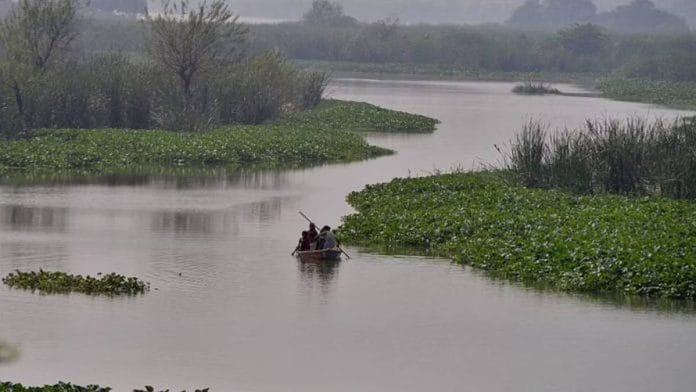New Delhi: The Ministry for Forest, Environment and Climate Change announced the “rejuvenation” of 13 major rivers Monday, which could increase the country’s forest cover by up to 7,417.36 square kilometers.
The detailed project reports (DPRs) of the 13 rivers were prepared by the Indian Council of Forestry Research and Education (ICFRE) and released in a press conference Monday. Rivers that will form part of the project include the Jhelum, Chenab, Ravi, Beas, Sutlej, Yamuna, and Brahmaputra in the Himalayan region, Luni in the inland drained category, and Narmada, Godavari, Mahanadi, Krishna, and Cauvery in the Deccan or Peninsular region. Together, these rivers cover 57.45 per cent of India’s geographical area.
The ICFRE plan looks at rejuvenating the rivers primarily by creating riparian forests, or planting trees along the river. According to the DPRs, a riparian forest functions “as the ‘natural buffers’ and ‘biofilters’ and supplement key processes such as the ‘self-regulation’ and self-purification.”
The government hopes these forests will increase the country’s scope to sequester carbon, by creating carbon sinks to absorb atmospheric carbon dioxide. According to the DPRs, the planned planting of trees for river rejuvenation will sequester 50.21 million tonnes of CO2 equivalent after 10 years, while after 20 years they are expected to sequester 74.76 million tonnes of CO2e. CO2 equivalent (or CO2e) means CO2 or any other greenhouse gas having the same global warming potential as CO2.
In 2016, India had pledged to create a carbon sink of 2.5 to 3 billion tonnes of carbon dioxide equivalent by 2030. A study has found, however, that India had overestimated the area available for the afforestation and forest restoration required to meet this goal.
Nonetheless, environment minister Bhupender Yadav expressed confidence Monday that the river rejuvenation projects would bring India closer to achieving its target. Under the Bonn Challenge, India had also pledged in 2015 to restore five million hectares of degraded land by 2030.
“If we implement the river rejuvenation project with a strong sense of commitment, then we can contribute to our goal of increasing our carbon sink,” he said, adding, “We also promised to restore degraded forests, and this scheme will aid us in restoring those lands.”
Also read: 2030 targets announced at COP26 differ from real actions, researchers predict 2.4-degree-C rise
Proposed interventions
The cost of rejuvenating the rivers through forestry is projected to be 19,342.62 crores, and will take five years to be implemented, according to the ICFRE.
The DPRs for 13 rivers follows a similar plan for the rejuvenation of the Ganga river, piloted in 2015-2016.
According to the DPRs, the river rejuvenation project seeks to achieve four “broad” goals: sustainable management of rivers and their landscapes, biodiversity conservation and ecological restoration, improving sustainable livelihoods, and “knowledge management.”
The interventions will be decided by whether the river is running through one of three landscapes: natural, urban, or agricultural.
“Proposed interventions meant in Natural Landscapes, primarily emphasize on protection, afforestation, control of invasive and alien species, fire control, plantation of medicinal plants, eco-restoration, etc,” says a DPRs summary, adding that in agricultural
landscapes, planting of fruit trees will be encouraged, while in urban landscapes, proposed interventions include developing eco-parks and estate plantations.
Risks and benefits
Apart from carbon sequestration, the ICFRE says the project will improve groundwater recharge, contain soil erosion, and increase non-timber produce.
But the ICFRE also says the success of the project hinges on several factors, including the correct method of plantation and changes in climate.
To avoid risks, the ICFRE says forest department officials should ensure the “quality of planting stock, particularly age and size are important aspects,” and that conservation of soil and moisture should be done before plantation to further mitigate risk.
(Edited by Poulomi Banerjee)
Also read: India should commit to net-zero emissions, but not by 2050, climate expert says






